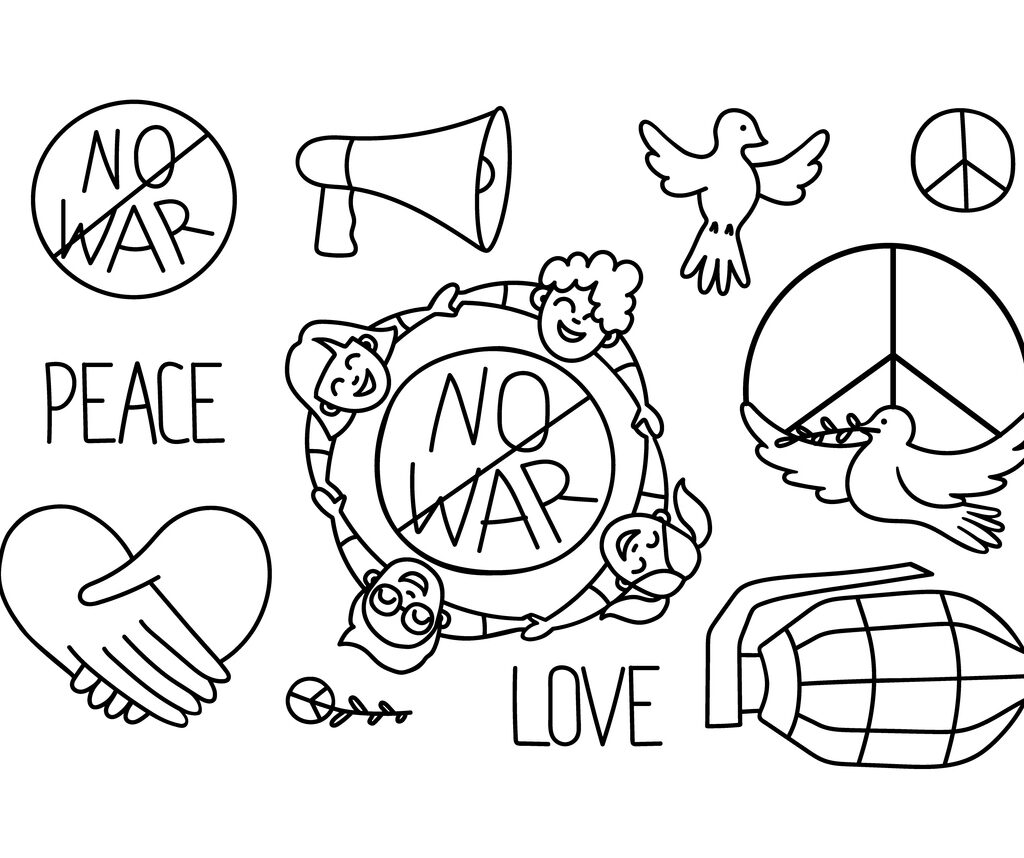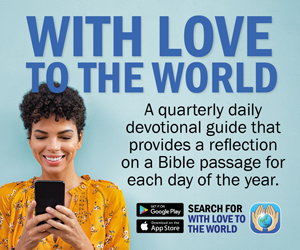Imagine a world where no one actively sought to create peace. That “what if” scenario might be closer to reality than we’d like to admit.
In a time when social media has given a megaphone to the masses, the responsibility for peacemaking is shifting from a few prominent figures to the collective efforts of individuals. The age of singular peacemakers like Martin Luther King Jr. and Mother Teresa may be evolving into an era where many people work together to influence positive change.
The task ahead is indeed substantial, but in the pursuit of justice and reconciliation, we recognize that God often works through people. The Beatitudes in Matthew chapter 5 exemplify this principle.
However, if the church, or any group for that matter, cannot lead the way in effective communication and constructive engagement, who will step up to fill this vital role?
Peacemakers are not individuals who shy away from issues or attempt to smooth things over without addressing the underlying problems. They willingly place themselves in the midst of conflict and guide others toward enduring truths:
- God is committed to justice.
- God cares about every daughter and son.
- God’s kin(g)dom is multicultural, cross-cultural and inter-cultural
Being a peacemaker entails a willingness to lay down personal desires, opinions, and the need to be right. While most people in comfortable circumstances may not face physical danger for their beliefs, being willing to relinquish the need to be right is a form of self-sacrifice.
To be a peacemaker means putting the well-being of others ahead of oneself, serving others in the process. If you are not willing to set aside personal preferences, discomfort, and self-righteousness, you may not truly be serving as a peacemaker. Yet, it’s never too late to change, as we serve a God of resurrection and redemption. We can ask for transformation in this area.
Being a peacemaker also involves actively seeking to mend the broken and hurting aspects of our world. You might think, “But I’m just one person. What can I do? Nobody listens to me.” However, you have influence or at least the potential for influence in your immediate circle – among family, co-workers, church members, your online network, and anywhere else you engage regularly.
The power of the Body of Christ is that it’s not about individual voices. We are not alone in this endeavor; we are part of a vast community of believers around the world. If each of us engages with those in our sphere of influence, we can collectively spread the message of love, care, and dignity.
Our opportunity to influence others is never greater than when we become a voice that values the dignity of every person, refuses to take sides in arguments, and instead champions love and compassion – as Jesus did.
Peacemaking isn’t meant to be easy, for meaningful change often requires effort. But Christians have chosen to embrace the challenging path, following a Messiah who invited us to take up our cross and walk alongside Him.
In a world rife with conflict, it’s evident that we could use a billion peacemakers. As a person filled with the same Spirit that raised Christ from the dead, you can unquestionably be one of them.
Remember that Jesus never instructed us to love a cause or religion. His message was simple: love God and love people. Let us be the peacemakers the world so desperately needs.













3 thoughts on “Is it still possible to be a peacemaker in a world of conflict?”
Jonathan Granoff, one of the speakers at the 2015 World Parliament of Religions said on his You tube clip “A mere 100 [nuclear weapons] would destroy the stratospheres openness for human life…and this is less than 1% of the 16,000 nuclear weapons in the world today”(1) .
We read in the 2022 SDGR p.3 “The severity and magnitude of the challenges before us demand sweeping changes on a scale not yet seen in human history. We must start by ending armed conflicts and embarking on a path of diplomacy and peace – a precondition for sustainable development. We simply cannot tolerate war and the senseless loss of precious lives and the resources it entails”(2). SDGR puts ending armed conflicts ahead of the climate emergency that they say comes second in order of priorities.
Let me expand on this paragraph. On the “resources it entails”;
“Just as an example, if 8 days of military spending were stopped, [with that equivalent amount of money], we could provide education for the whole world for 12 years – just to put everything in perspective”(3) .
(1) https://www.youtube.com/watch?v=JlGRSM4q4aA Also see https://www.youtube.com/watch?v=Cg6atunc-ks
(2)The United Nations The Sustainable Development Goals Report 2022 (SDGR)
(3) Planetary Security: Peace and cooperation in times of Climate Change and Global Environmental Challenges. 2nd and 3rd November 2015. The Peace Palace. The Hague.
The United Nations 1994 Human Development Report, Chapter 2, page 22 states: “We need another profound transition in thinking – from nuclear security to human security”.
“In the final analysis, human security is a child who did not die, a disease that did not spread, a job that was not cut, an ethnic tension that did not explode in violence, a dissident who was not silenced. Human security is not a concern with weapons-it is a concern with human life and dignity” (1)
Lee says: “Violence is, in essence, fragmentation…Under the paradigm of nonviolence, however, [rather than rushing off to war] conflict arises as a natural result of diversity and is an opportunity for mutual learning, reconciliation, and eventual unity” (2). [Unity in diversity. Not uniformity].
It is in changing mindsets that the hope of a better future for humanity lies, as it is with current, short-term thinking and fragmented world mindsets that most of our global problems lie. Therefore, we need to promote Human Security and Peace to the masses of humanity to promote the unity of humankind and the Peace mindset.
(1) United Nations 1994 Human Development Report Chapter 2 page 22.
(2) Lee, B.X. 2017 Aggression and Violent Behavior: Causes and Cures XV: Synthesis and Integration in Aggression and Violent Behaviour 2017-07-01, Volume 35, pp91-96, Publishers: Elsevier Ltd.
There is a clear need expressed by the United Nations in The Sustainable Development Goals Report 2022 (SDGR). It states pp.2-3 “…the world faces cascading and interlinked global crisis and conflicts…that threaten the very survival of humanity… Just as the impact of crises is compounded when they are linked, so are solutions. When we take action to strengthen social protection systems, improve public services and invest in clean energy, for example, we address the root causes of increasing inequality, environmental degradation and climate change” (1). So too, when we start to promote human security for establishment of peace, because of their interlinked associations, we also start to address many of the root causes of climate change.
Antonio Guterres, in his 2021 Our Common Agenda: Report of the Secretary General says “In our biggest shared test since the Second World War, humanity faces a stark and urgent choice: a breakdown or a breakthrough” (2). There is no room for passivity in our promotion of Peace. The urgency of the issue calls us all into responsible action.
(1) United Nations in The Sustainable Development Goals Report 2022 (SDGR).
(2) Antonio Guterres. 2021. Our Common Agenda: Report of the Secretary General p.3